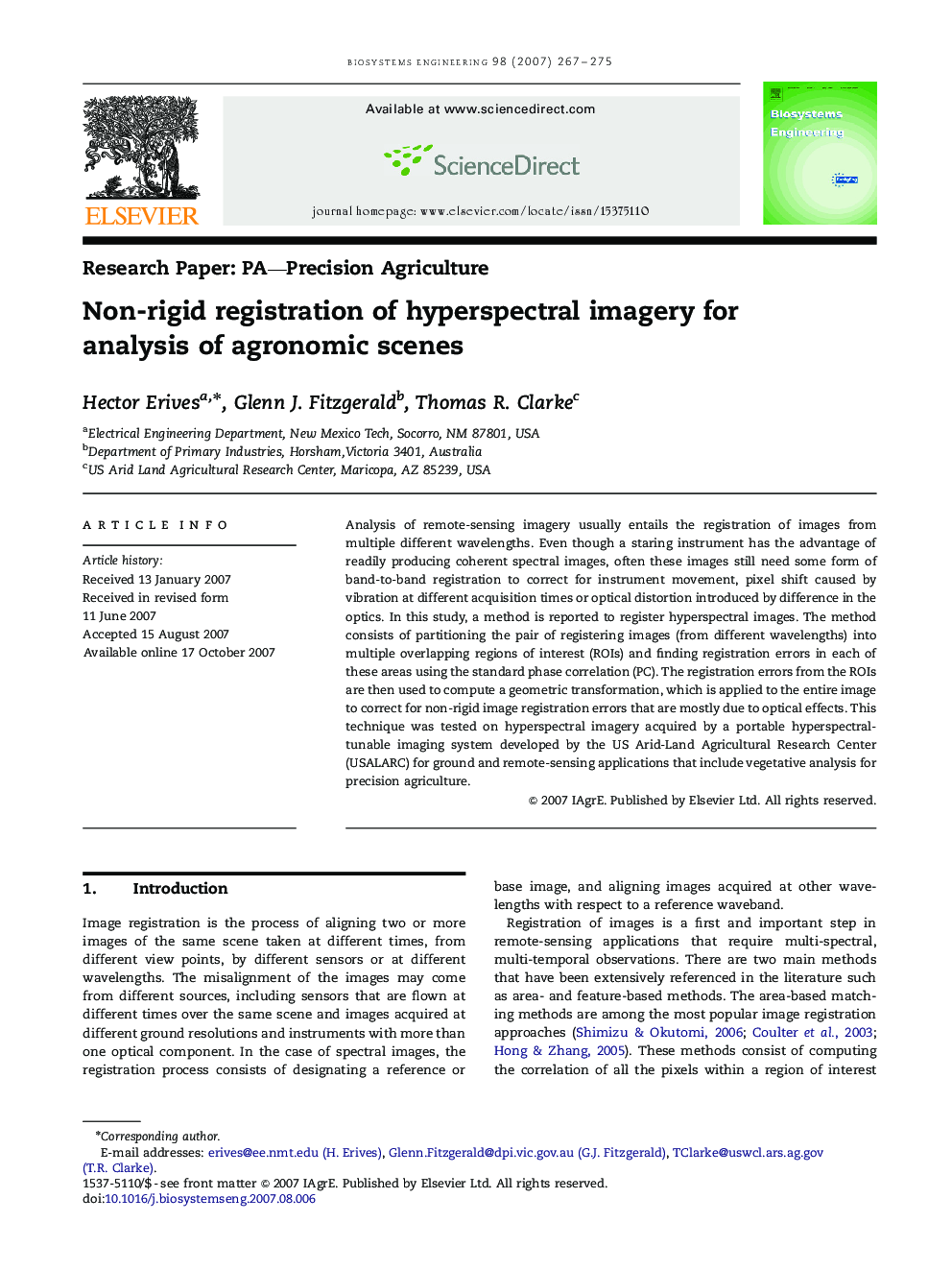| Article ID | Journal | Published Year | Pages | File Type |
|---|---|---|---|---|
| 1712474 | Biosystems Engineering | 2007 | 9 Pages |
Analysis of remote-sensing imagery usually entails the registration of images from multiple different wavelengths. Even though a staring instrument has the advantage of readily producing coherent spectral images, often these images still need some form of band-to-band registration to correct for instrument movement, pixel shift caused by vibration at different acquisition times or optical distortion introduced by difference in the optics. In this study, a method is reported to register hyperspectral images. The method consists of partitioning the pair of registering images (from different wavelengths) into multiple overlapping regions of interest (ROIs) and finding registration errors in each of these areas using the standard phase correlation (PC). The registration errors from the ROIs are then used to compute a geometric transformation, which is applied to the entire image to correct for non-rigid image registration errors that are mostly due to optical effects. This technique was tested on hyperspectral imagery acquired by a portable hyperspectral-tunable imaging system developed by the US Arid-Land Agricultural Research Center (USALARC) for ground and remote-sensing applications that include vegetative analysis for precision agriculture.
